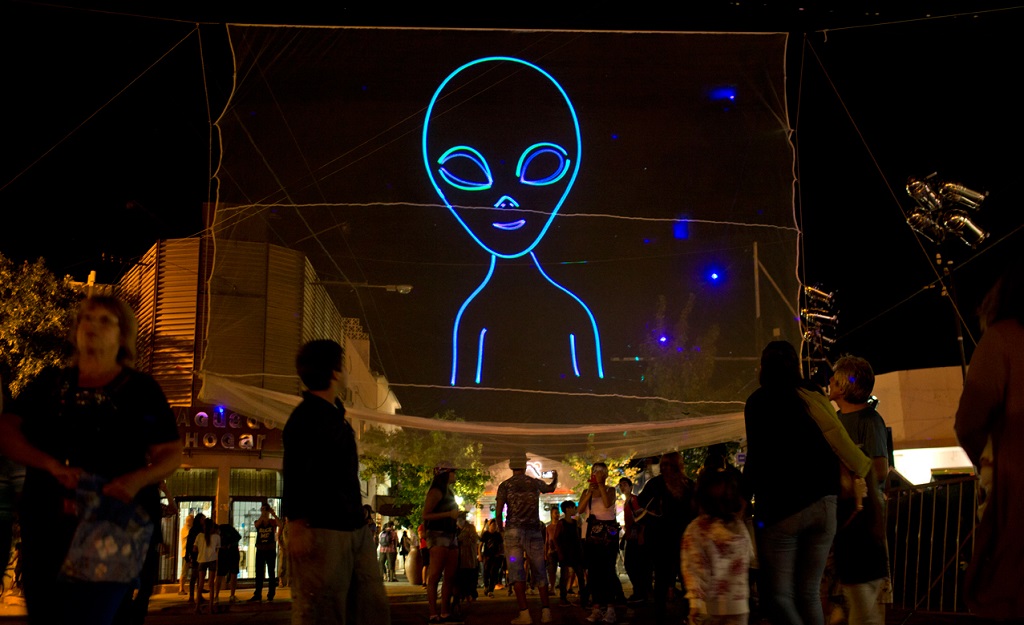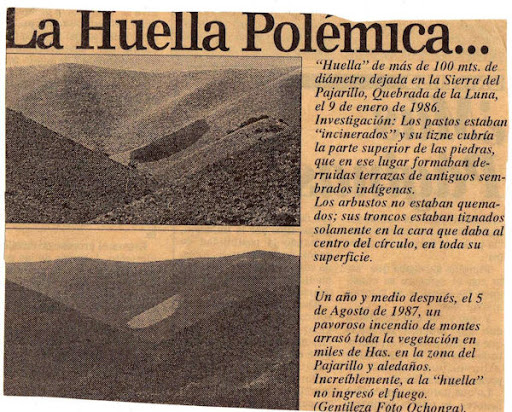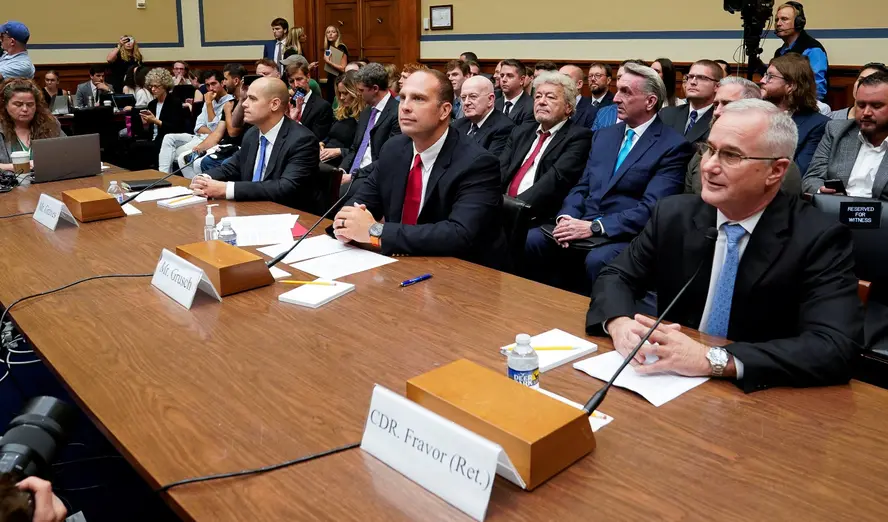Argentina has a rich history of UFO sightings, especially in the small town of Capilla del Monte. This place has become the center of UFO phenomena in the country. The town gained attention after the 1986 Huella del Pajarillo incident. Witnesses reported a strange mark left by a possible UFO landing. This event turned Capilla del Monte into a UFO tourism hotspot.
The town sits in the shadow of Cerro Uritorco, a mountain often linked to paranormal activity. Many locals claim that UFOs and even alien beings are often seen near this mountain. These stories have drawn both believers and skeptics to the region. Capilla del Monte now holds an annual Alien Festival to celebrate its connection with UFOs. Visitors from around the world come to this festival.
Argentina’s government has not ignored these events. They have occasionally investigated UFO reports, but no official explanation has ever been offered. The country remains one of South America’s most active places for UFO sightings. From strange lights to mysterious landings, the phenomenon has influenced local culture. It has even boosted tourism to this remote town.
In this article, we will look at the key UFO sightings in Argentina. We will explore how the government responded and the cultural impact of these events. We will also look at how UFOs have shaped the identity of places like Capilla del Monte.

Significant Encounters in Argentina’s UFO History
Argentina has a long history of UFO sightings that have attracted both local and international attention. These events have solidified Argentina’s place as a major location for UFO phenomena in South America. In this section, we will explore the most significant UFO sightings in Argentina, focusing on their details, witnesses, and government involvement.
The 1986 Huella del Pajarillo Incident
One of the most famous UFO events in Argentina took place on January 9, 1986, near the town of Capilla del Monte. Locals reported seeing a large, glowing object hovering near Mount Pajarillo. The next morning, a circular burn mark, measuring over 100 meters in diameter, appeared on the mountain. This mark became known as the Huella del Pajarillo or the “Pajarillo Footprint.”
This sighting attracted the attention of both media and UFO researchers. Locals described seeing bright lights, and some even claimed to witness humanoid figures near the site. The Argentine government did not offer an official explanation, but the event sparked widespread interest. Since this incident, Capilla del Monte has become a hub for UFO enthusiasts, with the town hosting an annual Alien Festival to celebrate its reputation as Argentina’s UFO capital.

The 1965 Dionisio Llanca Abduction
Another major UFO case in Argentina occurred in October 1973. A truck driver named Dionisio Llanca was traveling on a deserted road near Bahía Blanca when he saw strange lights in the sky. According to his testimony, his truck engine suddenly stopped, and a bright light surrounded the vehicle. Llanca claimed that he was abducted by extraterrestrial beings who performed various tests on him before releasing him several hours later.
Llanca’s story received significant media attention and sparked a government inquiry. UFO researchers, including Oscar A. Galíndez, conducted a thorough investigation into the case. Although some skeptics dismissed Llanca’s story as a hallucination or hoax, many UFO researchers consider this one of Argentina’s most credible abduction cases. You can learn more about this incident right here.
The 1978 La Aurora Case
In 1978, one of the most mysterious UFO sightings in Argentina took place at La Aurora, a rural area near the city of Salto. Residents reported seeing strange lights and flying objects over a farm owned by Luis Altamirano. Altamirano and several other witnesses described seeing a bright, disc-shaped object hovering over their property. The object reportedly emitted a strong, bright light and left a strange burn mark on the ground.
Local authorities investigated the incident but found no clear explanation for the burn marks or the lights. UFO enthusiasts continue to visit the site, and the event remains unexplained
The Falcon Lake Sighting (1967)
Although Falcon Lake is located in Canada, the 1967 Falcon Lake incident also has strong ties to Argentina due to the involvement of Argentinean-born researcher Ernesto Bravo. Bravo worked closely with Canadian investigators to analyze the burn marks and radiation left at the sight of the encounter. The sighting involved Stefan Michalak, a Canadian prospector who encountered a large UFO that emitted a burst of hot air, causing burns to his body. This case is one of the most documented UFO encounters in history, and Argentina’s ufologists contributed significantly to its study.
These sightings are among the most significant in Argentina’s UFO history. They have captured both national and international attention, and their legacy continues to inspire UFO enthusiasts and researchers across the globe.
Public and Media Response to UFO Sightings in Argentina
Argentina’s UFO sightings have received significant attention from both the public and media, especially in regions like Capilla del Monte. The country’s rich history of unexplained aerial phenomena has spurred intense public interest, and the media has played a key role in shaping perceptions. Major incidents like the 1986 Huella del Pajarillo event, where a mysterious burn mark appeared on a mountain, captured nationwide headlines and drew reporters and UFO enthusiasts to the area.
Media Coverage and Public Interest
The Argentine media has been particularly active in covering UFO sightings, with numerous reports appearing in newspapers, TV shows, and radio programs. During major sightings, such as the 1986 Capilla del Monte event, local news outlets published interviews with witnesses and experts. In some cases, international media also reported on the sightings, bringing Argentina’s UFO phenomena to a global audience. As a result, Capilla del Monte has become a focal point for both believers and skeptics, with the town capitalizing on its reputation by organizing annual Alien Festivals, which attract tourists and enthusiasts from around the world.
Programs on UFO phenomena have often featured interviews with locals, officials, and ufologists, contributing to the public’s growing interest in these occurrences. The Alien Festival in Capilla del Monte, which celebrates extraterrestrial culture, is a direct result of the heightened media coverage that began after the 1986 event. The town’s economic boost from UFO tourism has also contributed to its cultural identity as Argentina’s UFO capital.
Government Response and Transparency
The Argentine government has been relatively open in its approach to UFO sightings. While some countries have maintained secrecy around UFO phenomena, Argentina’s government has occasionally involved itself in investigations. For instance, when strange lights and UFOs were sighted near the Espora Air Base in 1962 and 2023, the government addressed these reports directly. In the 2023 incident, locals reported explosions and gunfire near the base, which were later linked to UFO sightings. Military officials investigated but were unable to provide conclusive explanations.

Despite these investigations, the Argentine government has generally refrained from making definitive statements about the existence of extraterrestrial life. However, their willingness to investigate such reports adds an element of credibility to the UFO sightings, making Argentina one of the more transparent countries in this area. Researchers and enthusiasts have praised the government for not dismissing these reports outright and for allowing local media to cover them extensively. More details about how this affects UFO research can be found here.
This combined response from the government and the media has fostered a unique environment where UFO phenomena are taken seriously by many Argentines, further cementing the country’s reputation as a UFO hotspot. The media’s continued coverage, along with annual festivals and government acknowledgment, has kept the topic alive in public discourse.
